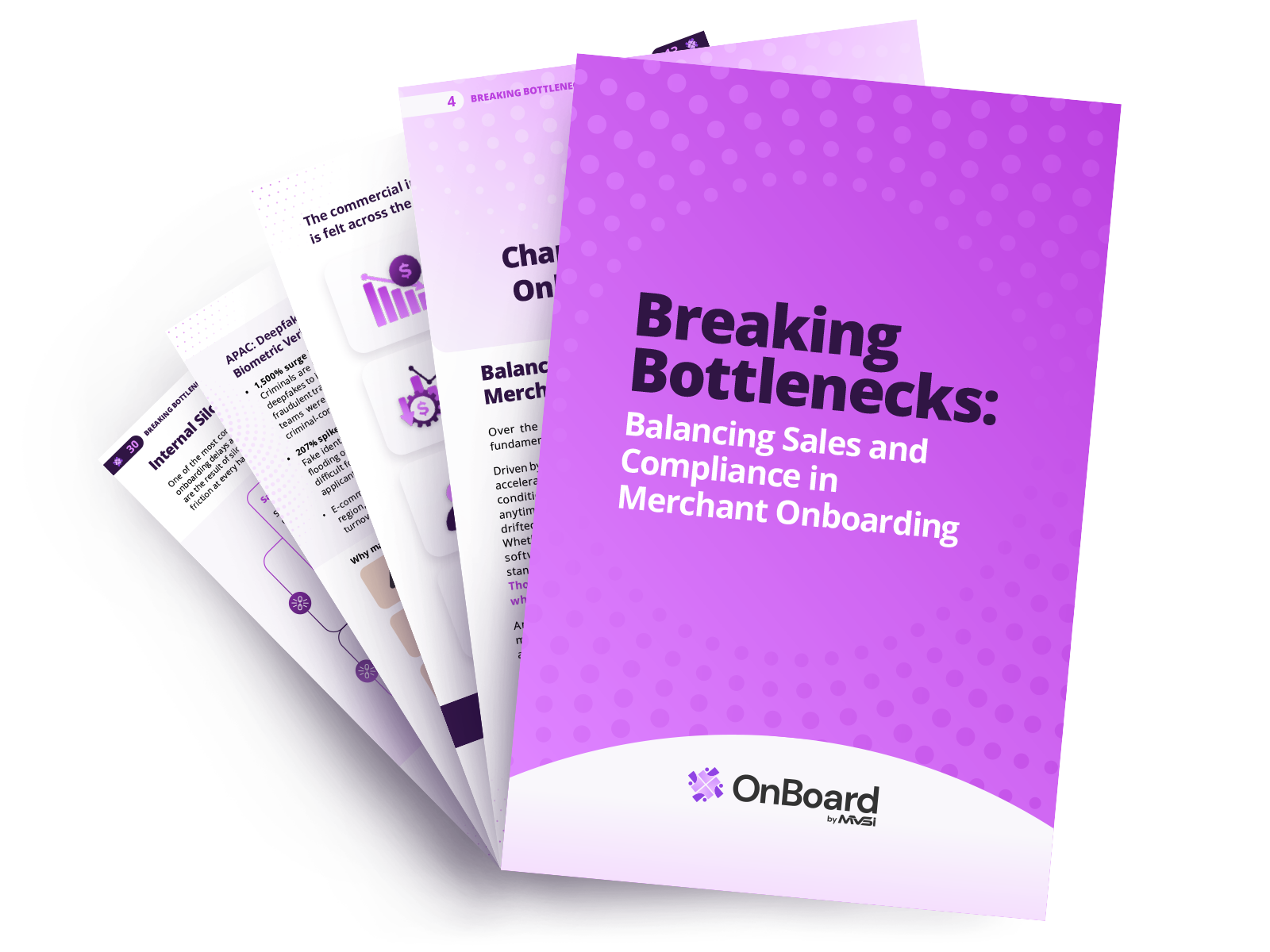The debate of crypto versus fiat often dominates headlines, but the deeper change is happening in the infrastructure that moves value. Traditional payment rails such as card networks and clearing houses are being challenged by new orchestration layers designed to route transactions more efficiently, at lower cost and higher speed.
Stablecoins are a strong example of this shift. Their appeal lies in near-instant settlement and reduced fees, and they are now being explored by issuers and large corporations alike. Circle’s bid for a regulated bank charter and reports of Walmart and Amazon testing their own stablecoins show how seriously these innovations are being considered within mainstream finance.
These shifts do more than change how money moves. They reshape what merchants expect from their providers. If transactions can settle in seconds, waiting a week to be onboarded feels increasingly out of step. The real competitive pressure point is not just the rails or layers themselves, but the readiness of onboarding processes to keep pace.
Key Takeaways
- Merchant onboarding has become the frontline of competition, and automated onboarding processes are now essential to win merchant trust.
- Stablecoins are reshaping payment systems, demanding faster settlement, lower fees, and onboarding that integrates KYC, KYB, AML, and risk management.
- Payment providers that adopt intelligent automation and real-time merchant underwriting will stay ahead, while those tied to legacy payment rails risk losing merchants.
The New Battlefield: How the Rails vs. Layers War Redraws Competition
To grasp what’s really shifting, look beyond stablecoins themselves to the underlying infrastructure they’re building. For years, financial systems have relied on monolithic payment rails—the established clearing houses like SWIFT and card networks. They’ve done the job, but they’re slow and expensive. Now we’re seeing a shift. New payment layers are acting like orchestration hubs. Not one rigid road, but a smart control centre that finds the fastest and cheapest route for every transaction.
Stablecoins highlight what merchants increasingly expect: lower costs and faster settlement. These pressures challenge established payment models and force providers to rethink how they compete. The 2025 Merchant Survey from The Payments Association pinpoints the appeal of this new approach. It found that 72% of merchants find high fees a significant barrier, while settlement delays affect 64% of businesses. Stablecoins are designed to address these specific issues directly.
This shift is being accelerated by a clear drive towards formal banking legitimacy, with stablecoin issuers now actively pursuing bank charters. This trend gained momentum when Circle Internet Financial Ltd. applied to create the “First National Digital Currency Bank N.A.”.
The strategic goal is twofold: to gain access to the Federal Reserve’s payment systems and to earn interest on reserve balances, fundamentally altering the economics, simplifying how liquidity is managed and lowering counterparty risk. As one commentator aptly noted, while crypto doesn't inherently need a bank, having one "makes it more understandable"—a significant advantage in building trust.
Worldpay’s recent partnership with BVNK for stablecoin payouts is one example of how providers are testing alternatives to traditional correspondent banking. This move cuts out the old correspondent banking network and shows a shift from just sending money to intelligently routing value.
But perhaps the most telling development comes from retail. Reports suggest that Walmart and Amazon are exploring the creation of their own stablecoins. This presents a direct challenge to the established payment landscape, a path other large multinationals are also considering. The implication is profound: high-volume merchants are evolving into payment systems in their own right.
Their aim? Create closed ecosystems with efficient payment layers. As Irene Skrynova, Chief Customer Officer at Unlimit, observes, the future lies in “intelligent orchestration across multiple rails and asset types.” These titans are no longer just participants; they’re becoming the architects, redrawing the battle-lines, where powerful merchants are poised to become formidable payment providers.
The Critical Vulnerability: Why Your Onboarding Process is a Liability
In this new landscape, the traditional merchant onboarding process has become a critical vulnerability—easily bypassed by agile competitors. When value moves faster, whether through stablecoins or other innovations, week-long onboarding feels outdated. This mismatch creates competitive pressure.
When value can move in seconds but merchants wait days to go live, the bottleneck is not the network, it is onboarding. No surprise that 40% of merchants are already considering a switch from banks to paytech providers that can get them started faster.
The difference in cost and speed is stark. Traditional onboarding can take up to seven days and cost nearly $500. Paytech challengers complete the same process in under an hour at around $200, according to Payments Cards & Mobile. What looks like inefficiency is actually a competitive weakness.
And the challenge is not just speed. Emerging payment methods like stablecoins bring new risks of volatility, fraud, and regulatory uncertainty.
That means onboarding cannot stop at identity checks. It has to combine KYC, KYB, AML, and real-time merchant underwriting into one flow, with risk management built in from the start. Providers who can adapt and monitor risk in real time will stay ahead. Those who cannot will fall behind fast.
Regulatory change is set to push this gap even wider. The Bank of England, for instance, has proposed caps on individual wallet holdings for systemic stablecoins; forcing a model where value flows through the system rather than sitting static within it. Providers with onboarding journeys that are too slow or too rigid will struggle to compete in a market where expectations are rising.
Today's entrepreneurs no longer tolerate archaic onboarding, and the ever-widening gap becomes a chasm when paired alongside impending regulatory clarity. The GENIUS Act, which cleared a key procedural vote by a 68-30 margin, aims to establish the US's first comprehensive stablecoin law. This is the green light corporations are waiting for. With regulation creating certainty and stablecoins setting a new standard of speed, the choice for merchants becomes clear: accept a week-long verification or turn to a competitor offering same-day onboarding. Loyalty disappears quickly when the experience does not match expectations, making onboarding the deciding factor in whether merchants stay or walk away.
The Strategic Arsenal: Building an Onboarding Advantage That Wins
To win merchant trust in today’s fast-changing payments landscape, providers need more than speed..This means building a superior onboarding arsenal, turning a current liability into an asset. The solution is a comprehensive rebuild, centred on three core components:
Weapon 1: The Precision Guidance System
In a payments world where value can move instantly, as stablecoins demonstrate, onboarding must keep pace. Manual reviews and week-long verification are no longer compatible with merchant expectations. Intelligent automation closes this gap by guiding merchants through the process seamlessly, with every application scored in real time against pre-configured rules. Low-risk merchants can be approved on the spot, while only higher-risk cases are flagged for review. This ensures that the majority of merchants move forward without delay, while still applying the right level of scrutiny where it is needed.
The strength of this model lies in “management by exception.” Instead of treating every application as high risk, providers focus resources only on the cases that matter most. That reduces bottlenecks, accelerates time to revenue, and prevents friction that drives merchants elsewhere. It also makes risk underwriting more consistent, since decisions are based on rules that can be updated as regulations evolve. As long as providers can clearly describe a risk, intelligent automation can measure and manage it in real time. This is how onboarding transforms from a liability into an advantage: faster, smarter, and ready for an ecosystem shaped by innovation, including stablecoins.
Weapon 2: Unified Intelligence
Stablecoins illustrate what is possible for instant and low-cost settlement, yet many providers still slow merchants down with siloed systems. Sales, compliance, and risk teams working separately create duplicate requests, delays, and inconsistent communication. Paytechs are already closing this gap, with 70% adopting orchestration tools compared to just 47% of banks. A unified onboarding flow ensures every team sees the same data in real time, which speeds up decisions, reduces errors, and gives merchants the seamless experience they expect.
Smart tools make this possible. Customisable digital forms replace paperwork, contracts can be created and updated instantly, and partner channels onboard merchants with the same branded journey. Shared dashboards keep sales, compliance, and risk aligned on every application. With unified intelligence, bottlenecks are removed and providers can deliver onboarding that matches the speed and certainty stablecoins bring to payments.
Weapon 3: Next-Generation Logistics
A modern provider needs future-proof, programmable infrastructure. Paytechs are preparing for future innovations, with nearly half planning for CBDCs and stablecoins, while banks lag behind at 23%. This matters because merchant onboarding is the first place those new payment methods will be tested. If providers cannot support merchants adopting new payment methods, such as stablecoins, they risk becoming the bottleneck instead of the enabler.
Out-of-the-box orchestration tools make this possible by allowing providers to plug in new payment methods, compliance checks, and settlement rules directly into the onboarding journey. For merchants, this means faster access to modern rails, less friction, and the confidence that their provider is prepared for the future. Onboarding is no longer just the starting point, it is the foundation that determines whether merchants can fully benefit from the next generation of payments.
The Time to Mobilise is Now
The race for merchant loyalty is already underway. Market dynamics are shifting as new payment models, including stablecoins, capture attention and regulatory frameworks evolve. With 40% of merchants considering a switch to paytechs, the competitive landscape is intensifying. The landscape is evolving quickly, with the GENIUS Act moving through Congress and issuers such as Circle seeking regulated bank status. These developments underline how seriously stablecoins are being considered within formal financial systems.
The providers that succeed will be those who understand that trust is won or lost at the very first touchpoint. A frictionless, intelligent, and future-ready onboarding experience has become the cornerstone of competitive advantage and a visible signal of a provider’s strength.
The losers will be those who mistake legacy processes for strength. They will discover, too late, that their onboarding protocol was a critical vulnerability that drove their best prospects toward competitors who had already mastered the war of layers.
Is your onboarding strategy a competitive advantage or a critical vulnerability? The battle for merchant acquisition is here. The battlelines are drawn.
Don’t be caught on the wrong side.
How does MVSI's OnBoard help?
The biggest vulnerability we have highlighted is clear: traditional onboarding cannot keep pace with the demands created by innovations such as stablecoins. When value can move in seconds but merchants wait days to be approved, providers risk losing business to faster competitors. The challenge is not just speed but also control. Stablecoins, like other emerging payment methods, bring new volatility, fraud risks, and regulatory uncertainty, and onboarding must adapt in real time to keep merchants live and protected.
MVSI’s OnBoard is built for this reality. Fully customisable smart forms capture exactly the data needed for each merchant type, while automated KYC, KYB, and AML workflows ensure compliance is applied consistently across jurisdictions. A real-time decision engine scores risk instantly, allowing low-risk merchants to be approved without delay while higher-risk applications are routed for deeper review. This makes merchant underwriting faster, sharper, and fully aligned with the unique risks introduced by stablecoins and other emerging payment models..
Beyond initial onboarding, OnBoard provides portfolio-wide monitoring and automated reporting that regulators can trust. Offer generation, contract management, and audit-ready reporting bring every stage of the merchant lifecycle under one framework. Instead of reacting to risk after the fact, providers can manage it proactively, keeping pace with the new demands of programmable money.
With OnBoard, providers can transform onboarding into a foundation for growth, compliance, and trust. This ensures readiness for whatever innovations—stablecoins or otherwise—shape the payments market. See it in action now. Book a demo today.



.png)



